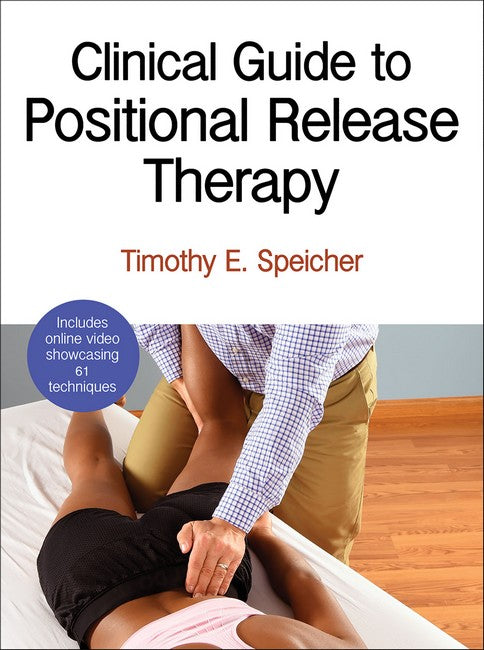Timothy E. Speicher, PhD, ATC, LAT, CSCS, is president of the Positional Release Therapy Institute. He is considered a leading expert in positional release therapy (PRT). Speicher discovered and developed the fasciculatory response method (FRM), which has revolutionized the way PRT is applied, practiced, and taught. He established the Positional Release Therapy Institute to provide education on the FRM and PRT through the institute's courses while allowing for its application to a patient population at the institute in Ogden, Utah. Speicher frequently speaks on PRT to professional organizations and at conferences, and his research has been published in academic journals. In 2014 he received the first-place award for outstanding manuscript on evidence-based concept mapping by the Athletic Training Education Journal, published by the National Athletic Trainers' Association (NATA). In 2013 he won the journal's first-place award for outstanding manuscript on case-based analogical reasoning. Speicher, who has held several faculty and research appointments at various academic institutions, is a member of the NATA and was on the board of directors of NATA Research & Education Foundation. Currently, Speicher holds two faculty appointments: affiliate faculty for the University of Idaho, where he teaches neuroscience for the master's degree in athletic training program, and assistant professor at Rocky Mountain University of Health Professions, where he provides instruction in evidence-based medicine for the doctorate in health science.
Request Academic Copy
Please copy the ISBN for submitting review copy form
Description
Part I. Foundational Applications and Procedures Chapter 1: Introduction to Positional Release Therapy Strain Counterstrain Tissue Assessment and Documentation Strain Counterstrain Versus Positional Release Therapy Positional Release Therapy Guidelines Summary Chapter 2: Positional Release Therapy Research and Theory Neurophysiological Foundations Somatic Dysfunction and the Osteopathic Lesion Clinical Implications Summary Chapter 3: Special Populations Youth and Elderly Patients Mastectomy Patients Competitive Athletes Pregnant Patients Populations With Disabilities and Disease Summary Part II. PRT Techniques by Anatomical Area Chapter 4: Foot Dorsal Structures Plantar Structures Common Injury Conditions Summary Chapter 5: Ankle and Lower Leg Anterior Structures Medial Structures Posterior Structures Lateral Structures Common Injury Conditions Summary Chapter 6: Knee and Thigh Anterior Structures Medial Structures Posterior Structures Lateral Structures Common Injury Conditions Summary Chapter 7: Pelvis Anterior Structures Posterior Structures Common Injury Conditions Summary Chapter 8: Spine Anterior Structures Posterior Structures Common Injury Conditions Summary Chapter 9: Shoulder Anterior Structures Posterior Structures Common Injury Condition Summary Summary Chapter 10: Elbow and Forearm Anterior Structures Medial Structures Posterior Structures Lateral Structures Common Injury Conditions Summary Chapter 11: Wrist and Hand Anterior Structures Posterior Structures Common Injury Conditions Summary Chapter 12: Cranium Regis Turocy, MSPT, DCHE, PRT-c Osseous Structures Muscular Structures Common Injury Conditions Summary

